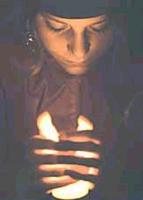In his Against Flaccus, Hebrew historian, Philo of Alexandria wrote that on July 28, 38 CE the Hebrew king, Herod Agrippa, visited Alexandria (Egypt) on a mission from the Roman emperor, Caius Caligula. The story goes that Herod was insulted. The Roman governor of Egypt, Aulus Avilius Flaccus, did nothing to punish those guilty.
The city's Greek elite class, which hated the Romans and despised the Jews, demanded that statues of Caligula be erected in the Jewish synagogues as a sign of allegiance to the emperor. The move was trick designed to cause trouble for Flaccus. If Flaccus built the statues, the Jews would be enraged, and he would have to use violence to control them. If he didn't, then he'd have to explain himself to Rome.
Flaccus was forced to install the statues, which encourage the mob to attack the synagogues, destroying the gardens and burning the buildings. Philo noted that the attacks were well organized, planned. Flaccus contained the Jewish in their quarter of the city. Many were stoned, clubbed, or burned and the dead bodies were mutilated. Members of the Jewish council were arrested and whipped in the amphitheater to celebrate the birthday of the emperor; others were crucified to entertain the citizens of Alexandria (Against Flaccus 72.84 85). All of this took place during August-September 38 CE.
"[Jews] were arrested, scourged, tortured and after all these outrages, which were all their bodies could make room for, the final punishment kept in reserve was the cross... [Flaccus] ordered the crucifixion of the living... And he did this after maltreating them with the lash in the middle of the threatre and torturing them with fire and the sword (Against Flaccus 72, 84)."
During the first week of October 38 CE, Flaccus was arrested by a Roman officer sent by Caligula.
Thursday, February 1, 2007
Subscribe to:
Post Comments (Atom)

No comments:
Post a Comment